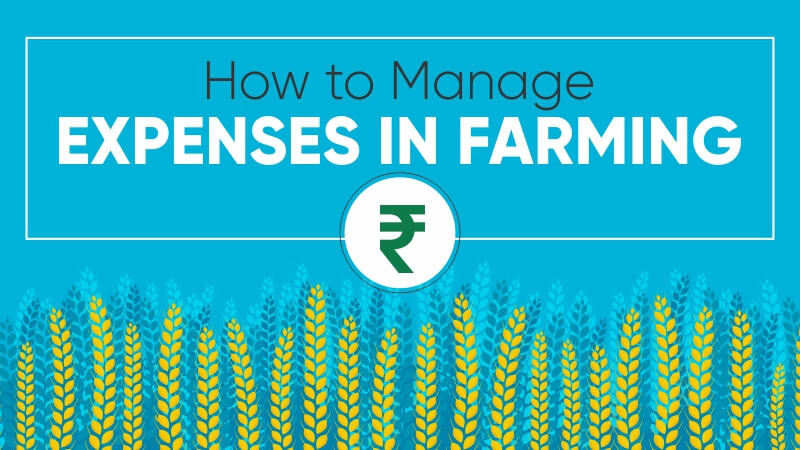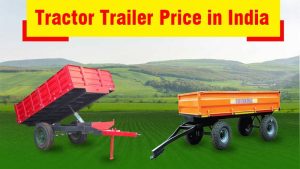It’s never simple to figure out how much is spent on family living expenses. However, it can be particularly challenging when there are strong ties between the family and the business, as there are on the family farm. Knowing where your money comes from and goes will help you manage the expenses of your family. Farm families have several distinctive features like having a tractor at home that enables managing their finances particularly difficult. Think about these factors as you start to look at your family’s living expenses.
Farm income can be unpredictable and inconsistent. From year to year, income can vary greatly. Even while income and expenses often have a seasonal rhythm, they can change from year to year. Costs for insurance and medical care can be costly. The cost of employee insurance plans might not be partially covered by the company. The farm family is not eligible to take part in a group insurance program. A larger danger of accident, disability, or death exists for agricultural producers, which increases the demand for insurance.
Examine Expenses:
Here is a technique you can use to project your revenue if all of your money comes from farming. Make the most accurate projections of potential selling prices and production first (sales amounts). Subtract your best estimates for the costs of hired machinery and personnel, feed, seed, gasoline, chemicals, chemicals, animals, maintenance, taxes, and other farm expenses. You’ll be able to get an idea of how much money is left over after paying debts, living expenses for the family, and other capital expenditures. This will also assist you in determining the amount of short-term financing you will require during times of low or no income.
Budgeting Labours:
Family members may need to manage their time and effort between farm and home tasks, particularly during times of peak farm work. Major home improvement projects might be planned for seasons when agricultural work is less strenuous. Scheduling tasks will likely lead to less disagreement than delaying tasks till time permits. Some household expenses, like paying a nanny, may actually lengthen the number of time workers is available for fieldwork.
The three different budget types are:
- Total farm budget
- Budget for business
- Small budget
- Total Farm Budget: The primary physical and financial aspects of the complete farm business are summarised in a classified and thorough manner in the whole-farm budget. Whole-farm budgets define the constituent aspects of the overall farm operation and establish the relationships between the various parts, both separately and collectively.
- Budget for Business: A declaration of what is typically anticipated from a certain set of production techniques while producing a specific quantity of output is known as an enterprise budget. It comprises a declaration of the earnings from and costs associated with the creation of a specific product. A company’s budget lists both variable and fixed expenses. It can be used to figure out profitability and break-even points.
- Small Budget: The partial budget is helpful in assessing the outcomes of a deviation from the original plan. Only those revenue and spending lines that will change as a result of a specific modification in the plan are taken into account in this budget.
Budget Limitations:
Before taking conclusions from budgets, the resource situation must be carefully assessed. Given the same fundamental budget information, farms with various owned resource circumstances may have diverse management plans.
Budget dependability will be hampered by production and marketing uncertainties. Budgets should be created using the best estimations for use in agricultural business analysis. High levels of variability, however, put the credibility of the estimates employed in the business budgets under pressure and expose the operator to risk. Considering the best- and worst-case outcomes in addition to the anticipated result is one option. Probability distributions for price changes and weather-related occurrences can provide useful context. Budgets may have little or no benefit even with the diligent application as errors can accumulate over time. When deciding which solutions would best achieve the goals and objectives of the farm family, the manager should take this aspect of risk into account and analyze it.
Why stick to a budget?
The farm manager can use budgets as a way to:
- Before investing resources in an organizational transformation, experiment with potential outcomes using simulation.
- Find expense factors that you might have otherwise missed.
- Streamline the current setup.
- Obtain credit from lending organizations.
- Improve your organizing and reorganizing skills.
Keep maintaining records:
An annual analysis of your gains and losses is insufficient. Throughout the year, manage the farm’s finances by keeping thorough records. By doing this, you’ll be able to spot seasonal and short-term trends as well as long-term changes in profitability. Purchases, maintenance costs, administrative fees, and related information will all be included in the detailed records. For the purpose of analyzing patterns, specifics like dates, suppliers, and raw material costs are crucial. You might be shocked to learn that the parts of your company that make the least money also cost the most to maintain.
Enhance the productivity of farming processes:
A productive company makes savings. Your budget will appreciate you whether your efficiency results in fewer hours worked or less material waste. Keeping thorough records can aid in making cost-effective purchases. You may make smart purchases in the future by calculating how much feed, fertilizer, seed, and gasoline you require each season. Your seasonal costs are reduced as unnecessary purchases are avoided. You can better manage your spending by forming a partnership with a reputable agriculture supplier. If you are unsure of the quantities you require, knowledgeable vendors can assist in determining your supply needs.
Repairs that are not urgent should be postponed:
Not every broken thing needs to be fixed right away. Keep a running note of the repairs your firm needs in order to balance your expenses. Set a priority for your farm equipment maintenance to draw attention to fixes that must be made quickly or that are necessary for your company to function. You can prioritize your expenditures by delaying small repairs so that you have money for the most crucial problems.
For more detailed information on popular tractor models, tractor games visit the KhetiGaadi website. KhetiGaadi provides you with all features and specifications of all tractor models along with their tractor prices.




